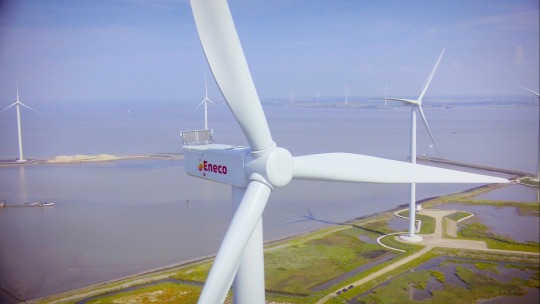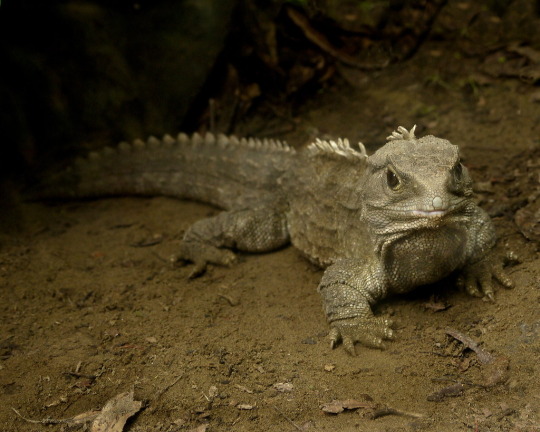#climate in new zealand
Explore tagged Tumblr posts
Text

Ireland, Iceland, Greenland, New Zealand, and Antarctica are regions without native snake populations.
108 notes
·
View notes
Text




you;re all so sexy
#yeah I’m bisexual#attracted to guys girls genderqueers and renewable energy sources#solarpunk#objectum#climate positivity#IM SO EXCITED FOR A FUTURE FULL OF RENEWABLE ENERGY!!!! I KNOW IT IS POSSIBLE!!!!!!!#in order left to right top to bottom: wind turbines solar panels hydroelectric dam and geothermal power plant#I LOVE GEOTHERMAL PLANTS#from new zealand aotearoa so I see a lot of them#THEY MAKE CLOUDS ^_^
378 notes
·
View notes
Text
The Māori climate activist breaking legal barriers to bring corporate giants to court
In a landmark case, Mike Smith has won the right to sue seven of the country’s biggest companies over their alleged contributions to climate change
In a landmark decision in February, New Zealand’s supreme court unanimously ruled Smith has the right to sue seven New Zealand-based corporate entities, including fuel companies Z Energy and Channel Infrastructure, power and gas company Genesis Energy, NZ Steel, coal company BT Mining, Dairy Holdings and the country’s largest, and biggest emitting company dairy exporter Fonterra, claiming they contributed to climate change.
[...]
For Māori, a love of the environment “is built into us” Smith says, and when it comes to the disastrous effects of climate change the “future of our children and our grandchildren is on the line”. “That means when we see these things happening, we can’t just sit there and be silent – we must be responsible, and that sets us on a collision course with some of those economic and political systems that would destroy that relationship.”
[...]
A distinctive element to Smith’s case is his argument that principles of tikanga Māori – broadly, a traditional system of obligations and recognitions of wrongs – could inform his action and moreover, should inform New Zealand common law generally. The companies applied to strike out Smith’s proceedings in the lower courts, arguing, in part, that Smith’s claim was “incoherent” and would damage the integrity of tort law. In 2021, the court of appeal agreed, believing the case doomed to fail and struck it out. But in a major reversal, the supreme court said a judicial pathway should be open and common law should be able to evolve. It acknowledged climate change was an “all-embracing” existential crisis and said the law should take into account the 21st-century context.
57 notes
·
View notes
Text
#good news#new zealand#climate change#science#nature#environment#environmentalism#conservation#emissions#carbon emissions#greenhouse gas emissions
73 notes
·
View notes
Text
Are you a New Zealander or currently in New Zealand? Are you aware that cows fart?
You're one ahead of the current government then! They're trying to pass a bill that exempts agricultural activities from our Emissions Trading Scheme. Agriculture is a major industry in New Zealand, and a significant source of emissions. This bill will make it impossible to track, let alone achieve, our obligation to reduce methane emissions by 30% before 2030.
Here's a local news article about this proposed change, with comments from different spokespeople in Parliament: https://www.rnz.co.nz/news/political/520624/law-removing-future-ets-agriculture-obligations-passes-first-reading (for non-kiwis: National, ACT, and NZ First are the parties currently in government. Labour, Greens, and Te Pati Maori are currently in opposition).
The closing date for submissions is 11.59pm on Sunday, 28 July 2024 New Zealand time.
You can make a submission here:
There is no citizenship or geographical requirement for making a submission. Anyone, from anywhere, can submit. If you've seen this kind of thing go badly in your home country, please tell the government that!
#new zealand#aotearoa#politics#leglislation#farming#agriculture#climate change#climate crisis#greenhouse gas emissions#nzpol#nz politics
7 notes
·
View notes
Text
youtube
All over the world policy makers and communities are planning for a climate change-impacted future, figuring out what needs to happen to make sure we have our needs met, and cities with healthy green spaces are a very strong need.
Clare Hart is the manager of Horticulture at the Melbourne botanic gardens and one of the people ensuring the collections adapt fast enough to survive into the future. She says, predicting future climates “depends on what we do in mitigation works”. If Melbourne experiences an increase in temperature “maybe one, two or three degrees warmer. We’re looking at something like modern day Dubbo.”
Long-term planning is a hallmark of a good public garden but in a rapidly changing climate, it might look different to what it would have been ten to twenty years ago. During the millennium drought of 1997 to 2009, Melbourne Botanic Gardens made major changes to their water management plan and saved about 40% of their potable water use. A climate risk assessment report was commissioned by the gardens with the University of Melbourne to understand what was happening in the living collections.
Part of the report includes a graph depicting all the plants in the botanic gardens, colour-coded for plants most at risk. The data reveals that most of the plants growing today would struggle in the future. Clare says the gardens are already transitioning a lot of their species. “We will still have oaks and eucalypts, our beautiful fig trees and palms as well. What we’re essentially doing is changing now, in order to stay the same.” Clare draws our attention to cool climate oak that was lost in 2019 that has been replaced with climate suited plants for 2070 and 2090.
The Royal Botanic Gardens Victoria created a climate alliance so that botanic gardens all over the world can help each other and solve these problems together. Clianthus puniceus ‘Albus’, also known as Kaka Beak, is an important plant in their collection, gifted to the gardens by New Zealand to grow here in warmer conditions to their own. It’s a way for New Zealand to test how it grows in a warmer climate, and luckily it is flourishing and reproducing.
Not all sections of the garden will be impacted equally. Amy Downie is the curator of what's known as the ‘grey garden’, a diverse group of plantings on one of the gardens’ hottest, most exposed sites. “From cactus to palms, they all have in common their grey foliage. The great thing about grey foliage plants is they can survive in hot harsh conditions with not a lot of water.” Some plants may have fine hairs on their leaves, or powdery waxy coating to help reflect the sun and retain water, such as Eucalyptus macrocarpa. Additionally, Bizmarck Palm and Engelmann Oak have been sourced from other climate zones and Amy says, “we are hoping that some of the plants we’ve recently planted will eventually grow up to be the feature.”
A Eucalyptus grandis specimen from southern Queensland was planted here when Amy was in her apprentice year. It’s already on its way to providing shade for the garden, with projections for it to last for hundreds of years. Amy says that projecting this far into the future, into a time when she won’t be around to see the outcome “feels really good. We know climate change can be a scary thing to face, so seeing the positives that we’re doing here with our landscape succession plan and knowing that we’re going to plant trees that will be here for the next generation, fills you with a bit of empowerment and makes the future feel a little brighter.”
Clare says, “it’s about the legacy we leave is there for my family, for your family, for future generations to enjoy, not only to see the plants we see today, but to immerse themselves amongst the canopy of the trees. That’s what I want to see for the future.”
Featured Plants:
KAKA BEAK - Clianthus puniceus ‘Albus’
MOTTLECAH - Eucalyptus macrocarpa
BISMARCK PALM - Bismarckia nobilis
ENGELMANN OAK - Quercus engelmannii
FLOODED GUM - Eucalyptus grandis
#gardening australia#solarpunk#australia#gardening#botanic garden#garden#climate change#climate crisis#climate collapse#global warming#global heating#Melbourne botanic gardens#Melbourne#Royal Botanic Gardens Victoria#New Zealand#Youtube
7 notes
·
View notes
Text
I fucking hate climate deniers so fucking much
2 notes
·
View notes
Text
Large parts of the southern New Zealand city, Ōtepoti Dunedin, are currently flooded from an extreme rainstorm, yet another deluge due to climate change. Ben Nevell had something to say about it.
#climate change#climate crisis#nz politics#nzpol#new zealand#Aotearoa#bugger this government seriously
2 notes
·
View notes
Text
'Alarming drop off the cliff': Record low Antarctic sea ice triggers eme...
youtube
#climate change#climate crisis#climate#climate emergency#climate action#new zealand#nz#world news#politics#aotearoa#antarctica#sea ice#global warming#sea level rise#warming oceans#climate catastrophe#environment#Youtube
7 notes
·
View notes
Link
35 notes
·
View notes
Link
“Around the world, ‘daylighting’ (the process of uncovering lost rivers, also known as ‘deculverting’) has been developing slowly but surely. In 2014, Auckland ‘daylighted’ the Fairburn and Parahiku reserve streams. Sheffield inaugurated its Porter Brook pocket park in 2016, and for the past decade the city of Yonkers, New York has been uncovering the Saw Mill River, buried since the 1920s. Madrid, Manchester and New York City are also considering similar restoration projects.
Most of these urban rivers were covered up during the urbanisation of the nineteenth and early twentieth centuries, and as water quality deteriorated they were gradually put into culverts underground and sometimes turned into sewers, which also helped prevent floods. But with today’s technology and engineering, keeping them underground often doesn’t make sense any more. In fact, cities are realising that opening up old rivers could help them adapt to climate change.” -via TimeOut
#rivers#daylighting#new zealand#aotearoa#england#new york#spain#south korea#climate change#urbanization#good news#hope#environment
43 notes
·
View notes
Text
I am truly just having an incredible amount of fun with the little mermaid au
#ITTM-verse is locked into its time period and Bubblegum deliberately didn’t leave the Dubai penthouse bubble#and now I’m going mad with power (worldbuilding power)#also it’s so fucking delightful to include New Zealand’s flora and fauna like this is my turf now!!#vague fantasy kingdom has climate and ecosystem of Aotearoa more news at 7
11 notes
·
View notes
Text



tuatara. reblog my post
#these things are so so so cool#endemic to aotearoa new zealand#3 eyes#last living member of its order#old as the dinosaurs#can live up to 100 years#only reptile that prefers a cooler climate
345 notes
·
View notes
Text
Tāmaki Makaurau/Auckland just had severe flooding last night. Insurance companies are saying this is going to be the most claims since the Ōtautahi/Christchurch earthquake. And this is from severe rain. I hope this is the wake up call we need to start taking climate change seriously in this country. People were suffering enough with inflation and a housing crisis, this needs to radicalize people. At least two of our political parties want to invest more in fossil fuels. We need to protect people, we need to make sure the displacement doesn't help the rich profit (read up about the gentrification of New Orleans after Hurricane Katrina). I hope my fears are unfounded, I hope the reality proves me wrong.
#climate anxiety#climate change#climate crisis#Aotearoa#tamaki makaurau#auckland#new zealand#flooding#mine
18 notes
·
View notes
Text
Please sign ;w;
I dont want more of our planet destroyed, I may be young but I want to become old, on a planet that I can die happily on, not some deserted, toxic and filthy waste land. Im not great when it comes to this stuff but it'll be heavily appreciated if any of you sign this.
#just text#important#petition#Aotearoa#new zealand#nz#nz petition#Greenpeace#climate crisis#climate change#sea#ocean
3 notes
·
View notes
Text
.
#need to belong to a rich neoliberal woman who’s invested in my safety#she thinks my leftist ideas are quaint#she gives me Xanax when I get too excited about the news (it’s stronger than she says it is and i know but i don’t care)#she thinks it’s fun to set my daily schedule but#well i like it because I’m being told what to do but it ends up being enriching and constructive#even if it includes chores because you know what? building better habits is constructive too#anyway yeah she has a 25 step plan for surviving the fallout of climate change#property in New Zealand#and being useful in that space is part of my training too of course#but she cares about my comfort#also she ties me up and just goes crazy on me I’m like a bop it she pushes my buttons and I make a lot of noise and i eat her sloppy style#i mean not that sloppy but i do tend to use a fair amount of saliva#maybe we’d rarely have penetrative sex but she doesn’t pressure me into it and in fact really takes control#telling me to relax and let it feel good#and we cuddle and she’s very warm and maybe she gains some weight while we’re dating but i love her and love it because i love her#im sick im fucked in the head dude
3 notes
·
View notes